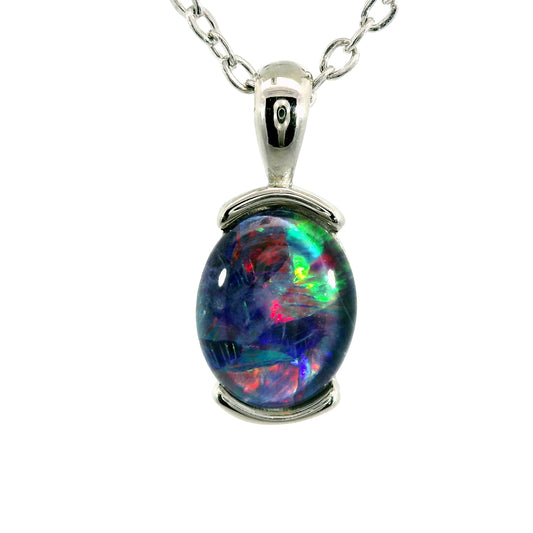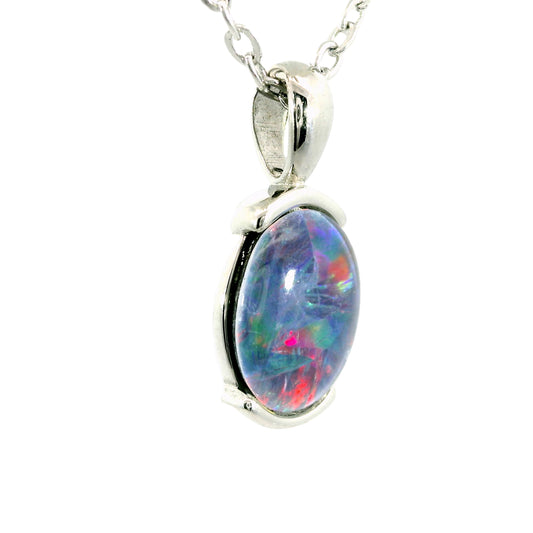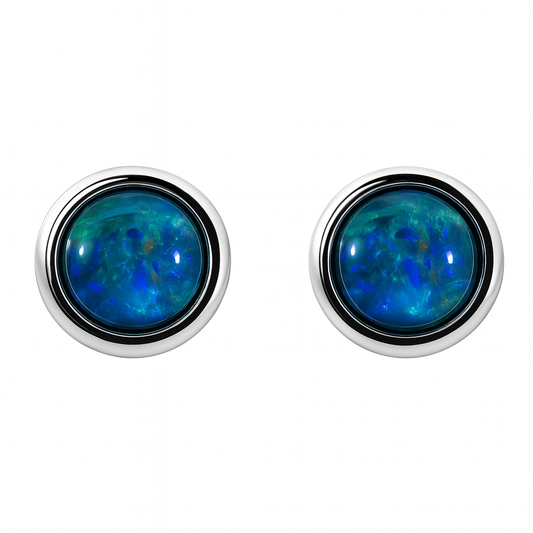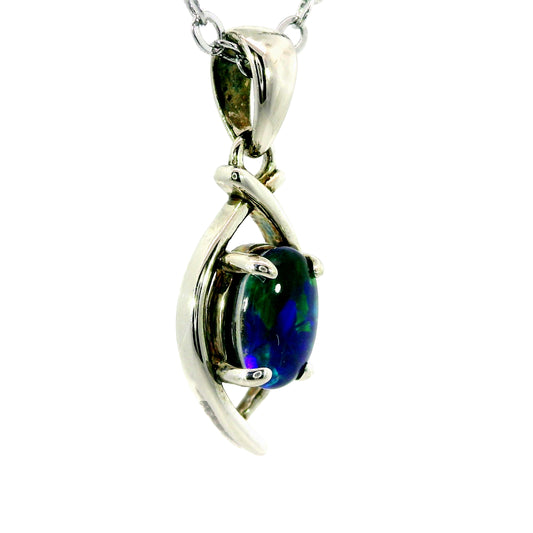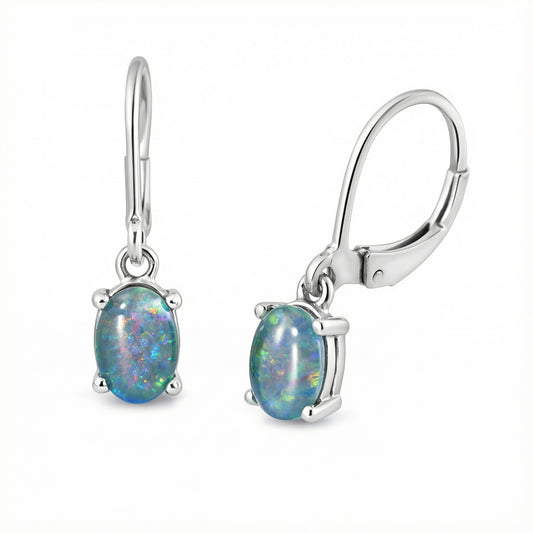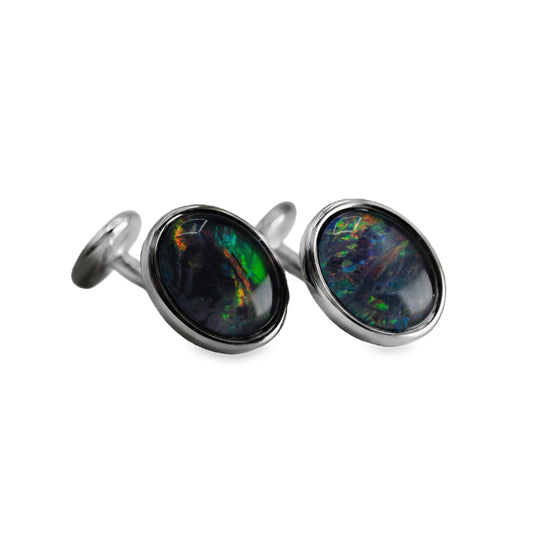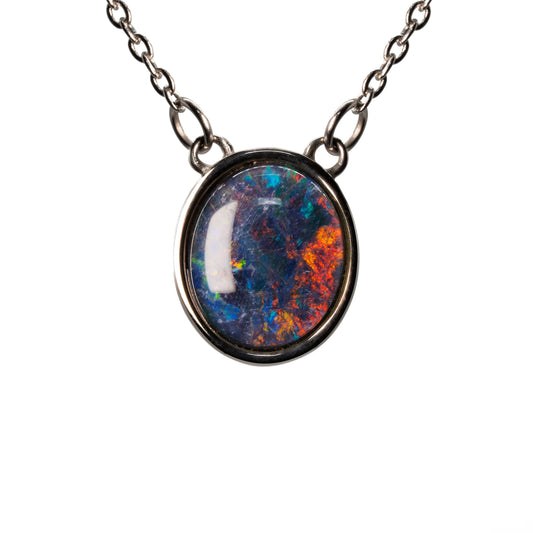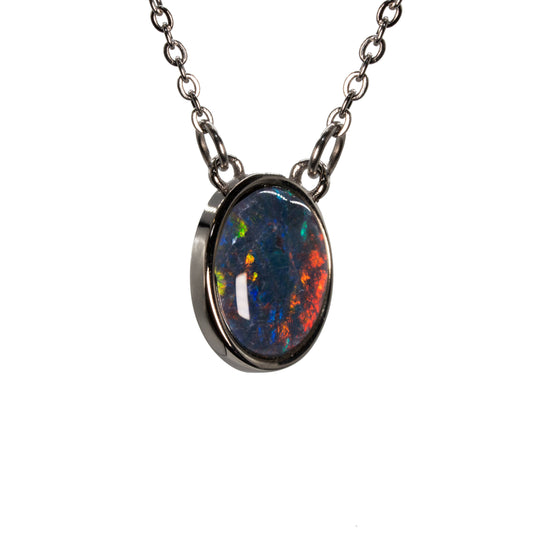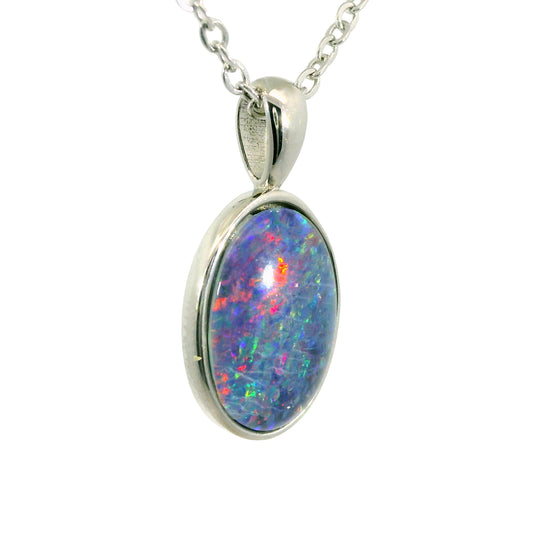Opal Lesson
History of Australian Opal Cutters
In 1967 Jack Musgrave Blaiklock began trading as a wholesaler throughout Australia and New Zealand with his son Graeme Blaiklock. In those years Graeme ‘cut his teeth’ as a wholesale jewellery sales rep. Many of the principles and strategies employed by Australian Opal Cutters began there.
In the early 1970’s Graeme had a thriving company and for many years has traded very successfully. His sons at the tender ages of 10 and 9 were often employed weekends at the generous rate of $10 an hour! The company is now managed by his son Jason.
Today Australian Opal Cutters is internationally recognised brand
with customers from almost every Nation on earth!
Australian Opal Cutters source opals directly from mine and then cut and set opals in contemporary jewellery designs. As Australian Opal Cutters manufacture jewellery (and cut out the middleman) they are able to offer excellent product at competitive prices.
The Lucky Gem from the Lucky Country
Since the 1880’s Opal has been known as the “lucky gem from the lucky country”, Australia’s National Gemstone and the “Queen of Gems” Opal. An important early description of opal is that of Caius Plinius Secundus, better known as Pliny the Elder, who lived in the first century A.D. Pliny wrote an extensive treatise entitled, “Natural History”. He describes opal as being:
"Made up of the glories of the most precious gems, to describe them is a matter of inexpressible difficulty. For there is amongst them the gentler fire of the ruby, there is the rich purple of the amethyst, there is the sea-green of the emerald, and all shining together in an indescribable union. Others, by an excessive heightening of their hues equal all the colours of the painter, others the flame of burning brimstone, or of a fire quickened by oil."
Opal was held in great value by the Romans, a fact which is reflected in the well-known story of the Roman senator Nonius. He is said to have possessed a very fine opal about the size of a hazelnut, and valued at 20,000 sesterces. The stone was so beautiful that the Roman emperor demanded that Nonius hand over the opal (whether by purchase or gift is not recorded). Nonius himself held the stone in such high regard that he departed from Rome with his gemstone, leaving his wife, family and property behind him. In the late 18th and early 19th centuries the opal was the engagement ring gemstone of choice, as it was exceptionally rare and stunningly beautiful. It is alleged that the Diamond cartel De beers, attempted to discredit opal by hiring a novelist named Sir Walter Scott to write a novel about the Queen of Spain who had a run of bad luck after being given an opal! The story turned out to be a bestseller. De Beers then purchased highly productive opal mines in Hungary and shut them down claiming that the opal “had run out”.
Queen Victoria however did a lot to reverse these false statements. She became a lover of opals and wore them throughout her reign. Her friends and her five daughters were presented with opals and because the royals were regarded as the model for fashion the opals once again became highly sought after. In the later years of her reign various Australian opal fields were discovered and worked.
When Australian opal fields appeared on the market in the 1890’s the old Hungarian mines spread the idea that the opal wasn’t genuine because they had not seen an opal with such fire before. By 1932 Australia to assume the title of premier opal producer of the world becoming most famous for its rare and colourful black opals in Lightning Ridge and fiery white opals in Coober Pedy.
Capturing a rainbow
Have you ever held a rainbow in your hand? Opals are the only gems on earth that capture rainbows, literally!. A rainbow in the sky is formed because water molecules are trapped in air. In Opal the water molecules are trapped in-between silica molecules. So Australian Opal does the same thing as a rainbow except the water is stationary rather than moving. Every other gem depends on faceting or chemicals to generate rainbow colours.
The Australian opal fields were once an inland sea. As the ages passed and the seas receded, sea creatures were isolated and marooned, and opalised. Eventually the area dried out completely and is now dry desert country. In time the ground waters, holding silica solution, also evaporated (with some artesian springs still active deep “underground”). Opal is formed as water runs down through the earth picking up silica from sandstone. This silica-rich solution is then carried into cracks and voids, caused by natural faults or decomposing fossils. As the water evaporates, it leaves behind a silica deposit. The deposit eventually hardens to form common opal, and in rare circumstances it forms precious opal.
5000x Rarer than Diamond
Opal is an extremely precious gem. Black opal is possibly 130 times rarer than diamond! For every 130 million carats of diamond produced only 1 million carats (or 200kg) of opal is mined. And from this rough the loss factor in cutting can be as high as 95% (In black opal).
You may have heard that “Tanzanite is 1000 x rarer than diamond”. This is suggested because there are 100 miles of tanzanite mines worldwide, and when compared to the 100,000 miles of diamond mines worldwide “Tanzanite is 1000 x rarer than diamond”. As there is only 20 square miles of black opal mining black opal is actually 5000 x rarer than diamond.

Black Opal

https://australianopalcutters.com/collections/opal-rings/products/black-opal-ring-3
The most valuable and popular of all opals is black opal. Black opal is incredibly rare and is found at Lightning Ridge in Northern NSW, so called because in a terrible Lightning storm a farmer, his dog, and 600 sheep were all killed by Lightning. It is called Black Opal because it has a black base caused by black or grey iron oxide in the opal. This black potch or common opal has no value unless we find a colour bar on top of it. The colour bar or the ‘play of colour’ of Black opal comes in all the colours of a rainbow with red being the rarest and most expensive.
Valuing Opal is extremely complex! Forget the “4 C’s” Opal requires the detailed examination of over 13 characteristics to assess value:
1.Variety.
- Body Tone.
- Brightness.
- Transparency.
- Colour.
- Hue.
- Outline or Shape
- Profile or cut.
- Pattern.
- Display (Directional or Multidirectional).
- Distribution of colour (%)
- Inclusions / Clarity.
- Carat Weight.
However if you just remember the “Miners Test” you can know if your opal is a true gem. Take your opal out of the bright light and just “cup” it in your hand to shade it slightly. If you see red “fire” or green ”fire” you will know that you have an authentic gem!
Boulder Opal
The boulder opal is one of the rarest and most valuable forms of opal found in Australia and makes up less than 5% of all opal mined. It is very sparsely distributed through South West Queensland. It is predicted that boulder opal is going to run out in the next 10 years because of the difficulty clearing Native Title and EPA requirements of rehabilitation. Native Title is the process of gaining agreement from the local Aboriginal tribes before mining takes place. This is an extremely difficult and time consuming process. Added to this is the EPA requirement that all mines need to be “back-filled” and trees planted when the mining is finished. This process alone can send a miner bankrupt if he has not found “colour” in his “dig”. Added to this are the onerous paperwork requirements, with “enough forms to sink a ship” the average miner just does not have the motivation to comply with all of the government regulations. So, as a result there are fewer and fewer miners on the field!
Boulder opal is formed in the cracks and crevices of the ironstone boulders in a gel form possibly as recently as hundreds of years ago, and with the passing of centuries this jelly opal turned solid and as you can see we are left with some beautiful boulder opal specimens. Boulder opal occurs as a filling between the concentric layers or in random crevices in the ironstone. The cutting process is extremely difficult as the cutter must navigate the “hills and valleys” of the Boulder Opal surface. What we are left with is an incredibly unique and individual gemstone.
The boulder opal has a high loss factor when cutting as we only yield 5% and has a rock waste factor of 95%. It is also the only opal suggested to run out within the next 5 to 10 years and with the value (“it is suggested”) increasing by 15-25% each year the Boulder opal can certainly make a sound long term investment.
This stunning specimen was presented as a gift to His Royal Highness the Duke and Duchess of Cambridge Prince Charles and Camilla to celebrate their visit to Australia. You can also see Prince William and Kate who have had a number of items made with us, Cufflinks and a stunning pearl pendant.
White Opal
(also known as “light” Opal)
Coober Pedy was discovered in 1915. This is where most of the 'white' or 'milky' and crystal opals (together known as 'light opal') are mined. Coober Pedy is the main producer of white precious opal, which is predominantly seen in stores overseas, particularly in the USA. Today, the opal fields encompass an area of approximately 45 kilometres. The opal level is formed of soft pinkish clay mixed with soft bleached sandstone.
The name “Coober Pedy” is an Aboriginal word that translates “man in a hole” and with temperatures around 40 degrees Celsius or 100 degrees Fahrenheit all year the cool underground mines have become popular as living quarters, and now most of the locals live underground!
Crystal opal (also known as translucent or transparent “light” Opal)
The next type of opal we cut is crystal opal. Crystal opal is pure hydrated silica it is translucent so you can see straight through it. We prefer the colour to be multi-directional, so you can see colour from all different angles, the second thing we prefer is large blocks of colour and the third thing is strong play of colour that shows up in the dark.
Patterns in opal are very important. There are numerous “named” patterns; pinfire, broad flash, harlequin, rolling mackerel just to name a few. This is where the molecular structure is so perfect it provides a repetitive display creating a “pattern”. These “patterns” are very rare and valuable and something to look for when you purchase an opal.
Doublet and Triplet Opal
Can you pick the difference between a Doublet, Triplet or Solid Opal?
If you are looking for an opal gem that has all of the characteristics of a top black opal, but at a price you can afford, then doublets and triplets are for you. A doublet is a thin layer of crystal opal with a layer of potch (black common opal SiO2·nH2O - an amorphous mineraloid comprised of hydrated silicon dioxide. (A mix of silica and water) or ironstone on the back which acts to bring out the colour of the opal).
Now this black potch has value only as a backing for an opal doublet, because to make quality opal doublets, that won’t delaminate, we need to use material with the same “co-efficient of expansion”. If we put plastic on the back of the opal (and sadly some unscrupulous people do) to make an opal doublet, the 2 different materials will delaminate and fall apart.
When delaminating occurs, moisture can also come between the layers and affect the colour of the opal. We offer a life time guarantee against delaminating and we have never had a customer return a doublet or a triplet because of this process of bonding opal-to-opal.
Triplets are a doublet with a crystal quartz cap on the top which acts to magnify and enhance the colour of the opal and provide a strong resilient “cap”.
A lifetime guarantee applies to our opal triplets because they have 3 silicates with identical co-efficient of expansion so they won’t delaminate. An opal triplet has a domed quartz crystal cap which has a higher reflective index than the opal. It actually kicks the colours of the opal up and because it is en-cabochon it also magnifies the pattern of the opal.
So a triplet looks incredible about a 1/30th the price of a black opal. For instance if we take the price of a triplet it might be $100 in price, White Opal with the same colour would be $400, Crystal Opal $800, Boulder Opal $1,600 a Black Opal of the same weight and colour $3,000 or about 30 times more expensive than an opal triplet with the same size and colour.
5 Reasons to buy from Australian Opal Cutters
Savings
We are regularly looking at the state of the market and comparing the prices of opal retailers. For example: an item we sold for about $700 the competitor piece was half the carat weight and almost twice the price at $1,250. And in Sydney alone you could pay up to 4 times more for similar items! (Show Price Guarantee Sheets) In the Opal Industry there can be up to 7 “middle-men” who each take a commission when they on-sell an opal. The Miner sells to the cutter who sells to the runner who sells to the wholesaler, who sells to the manufacturer who sells to the supplier who sells to the jeweler who sells to you! At each stage a profit margin is added. As we buy direct from the mines we are able to pass these savings on to you!
Selection
We are confident that you will find the finest products and the highest customer service Our collection is over 10,000 pieces of Opal, Opal set into jewellery rings, pendants, earrings, and thousands of loose Opal and every piece is cut, polished and set to perfection. This collection has been refined over many years, and you, the customer, have told us what you like and what you don’t like, so our ranges reflect sophisticated elegance, or contemporary modern styles. There is a piece to suit every taste and occasion.
Service
We love to build personal relationships with our clients. At Australian Opal Cutters we understand that a piece of jewelry is an incredibly personal purchase, and we want to match you with your perfect Opal. We are available at any time to provide you with advice and guidance, no matter which stage of the process you are at. Our service guarantee is an international lifetime warranty that is carefully defined on our website www.australianopalcutters.com. Because we are essentially a family business, care and personal service is extremely important. So whether you are from USA or the UK we will be able to repair, re-model or renew designs for years to come under our international lifetime warranty policy.
Quality
Quality is what differentiates Australian Opal cutters from the rest. When you think of quality you think of “old-fashioned” craftsmanship. Our jewellers have a strict quality control policy that includes checking for minute burr marks, setting strength, level and proportion, the solidity and gluing of stone settings, checking that there is no movement or any “looseness” in the gem setting, Our company policy is “we do not rest until you are happy”.
Confidence
All of our jewelry comes with a certificate of authenticity, providing you with 100% complete confidence in the quality of your purchase. Every 2 years we re-evaluate your purchase free of charge and send you an updated certificate. The international lifetime warranty covers all workmanship and manufacturing. We also have an “at cost” replacement guarantee for any accidental damage or loss.
International Warranty
We have an exceptional international warranty and customer service guarantee. There is a 2 year warranty on all workmanship and an “at cost” replacement guarantee for any accidental damage or loss.












































































































